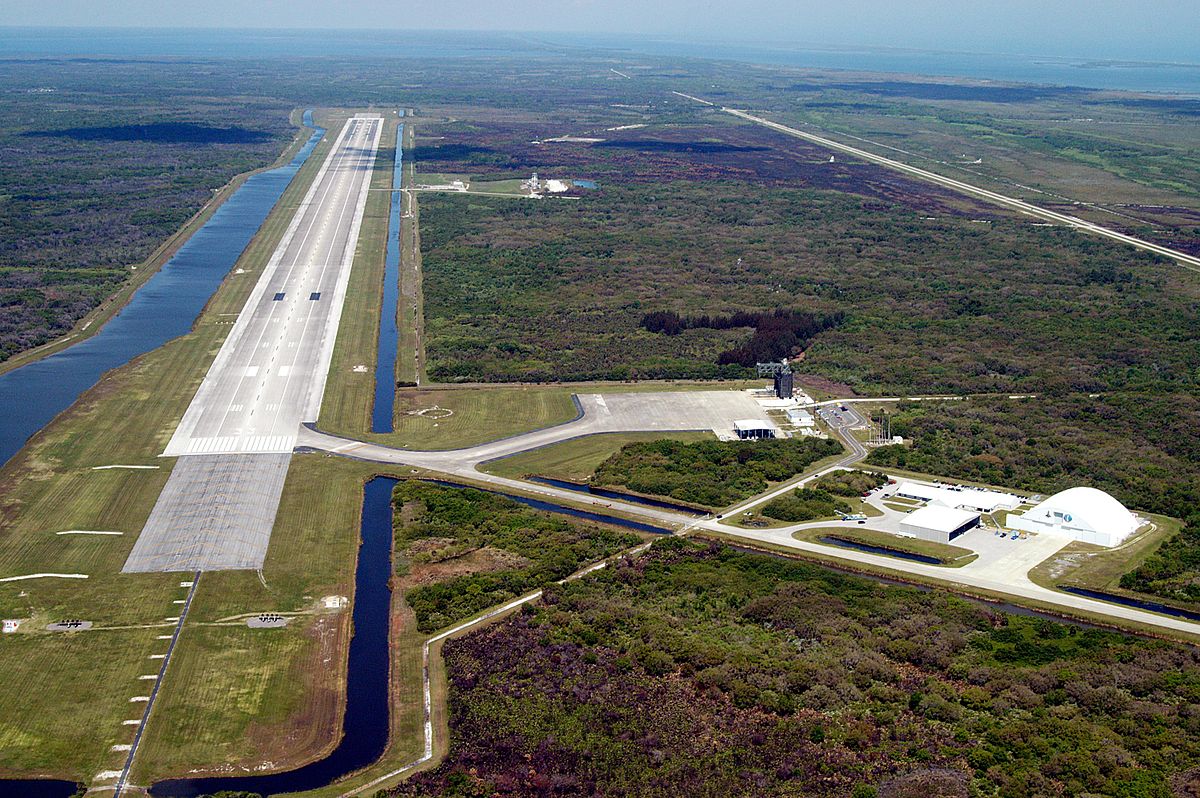The LLF provides a unique capability for new and expanding suborbital launch providers, unmanned aerial vehicle operators and other aerospace-related businesses to thrive in a location that maximizes the resources of the Space Center and Eastern Range operations, said Space Florida President Frank DiBello, at the time.
The 15,000-foot runway is set in a secure location providing year-round access to restricted airspace that is well away from populated areas. With an air traffic control tower and all the supporting services and equipment necessary for horizontal launch and landing, the LLF is capable of supporting all types and sizes of aircraft and spacecraft vehicles. It is ideal for horizontal flights, suborbital flight training and research, weightless flights, and aviation and aerodynamic flight testing.
Post Space Shuttle, the runway and the team overseeing it have adapted to a new set of vehicles. Companies taking advantage of the LLF include:
- Starfighters – Has been a longtime tenant of the LLF as it ramps up to launch small satellites into space using its fleet of F-104 jets as supersonic platforms for rockets to carry a research payload above the atmosphere for universities or other customers that don’t need a large, complicated launch system.
- Lockheed Martin – Delivered the Orion heat shield
- United Launch Alliance – Delivered rocket stages, including the Atlas V booster stage and Centaur upper stages
- Automotive businesses – Use the runway as an aerodynamics laboratory where companies can try out designs safely and push the envelope to more efficient car operations.
- In 2012, Performance Power’s Johnny Bohmer did set the Guinness World Record for the Fastest Standing Mile-Street Car when his Ford GT broke the 275 mph barrier, setting the record at 283 mph
- In 2014, the Hennessey Venom GT recorded a top speed of 270.49 mph
- In 2016, the Genovation Extreme Electric Z06 Corvette broke the land speed record at 205.6 mph
Other compatible uses of the LLF include;
- Horizontal launch and landing
- Suborbital flight training and research
- Weightless flights
- Test-flight aviation
- Straight-line aerodynamics testing
Horizontal Launch and Landing Area Development Plan
- Prime aerospace/aviation-designated land and some existing facilities available for development
- Supporting both Government and commercial spaceflight
- Orbital / suborbital
- Crewed / uncrewed
- Potential for development of:
- Multiple hangars with offices and shops
- Passenger processing/training and operations facility
- Assembly, processing and manufacturing facility
- Propellant and fueling facilities
- Railway access available
History of the Launch and Landing Facility
The LLF was first used by NASA’s Space Shuttle Columbia as it arrived via Shuttle Carrier Aircraft in 1979. The space shuttle, following the STS-41-B mission, then landed on the runway on February 11, 1984, marking the first-ever landing of a spacecraft from its launch site. On September 22, 1993, Discovery was the first space shuttle to land at night at the SLF. A total of 78 shuttle missions landed at the SLF.
The final landing of a space shuttle occurred on July 21, 2011 by Atlantis for STS-135. Discovery and Endeavour took off from the LLF on top of the Shuttle Carrier Aircraft for museums in Washington, D.C. and Los Angeles.
SLF Launch Site Operators License Environmental Assessment
The FAA is announcing the availability of and requesting comments on the Draft EA for the Shuttle Landing Facility (SLF) Launch Site Operator License. The FAA has prepared the Draft EA to evaluate the potential environmental impacts of the FAA issuing a Launch Site Operator License to Space Florida for the operation of a commercial space launch site at the SLF.
To view the Federal Aviation Administration (FAA) website for more information on the Environmental Assessment please visit:
https://www.faa.gov/space/environmental/nepa_docs/slf_ea/
Space Florida has prepared this Environmental Assessment (EA) in compliance with the National Environmental Policy Act (NEPA) requirements, with National Aeronautics and Space Administration
(NASA) as lead agency and the United States Fish and Wildlife Service (USFWS) and Federal Aviation Administration (FAA) as cooperating agencies, to evaluate the potential environmental impacts resulting from Space Florida’s proposed design, construction, and build-out of the Shuttle Landing Facility (SLF) Developable Land Blocks 2 through 6 at Cape Canaveral Spaceport (CCS). This EA may be referenced for future FAA license modifications.
To view the document click the link below:
Draft Environmental Assessment for SLF_January 2021



